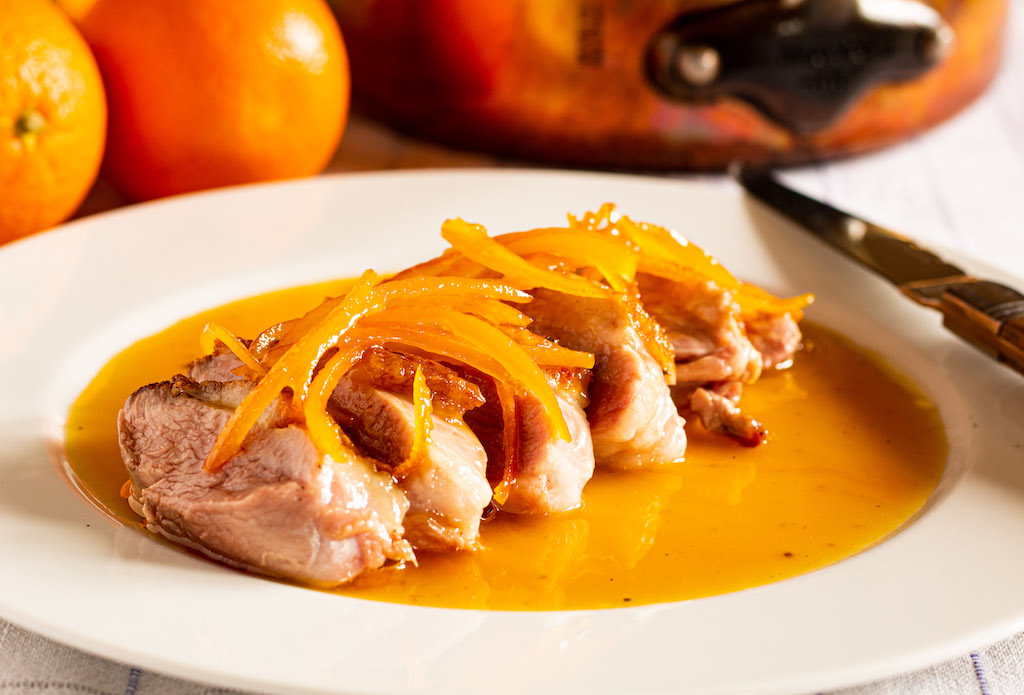Canard à l'orange
Your folders
Your folders
Cook Time: 25 minutes
Servings: 4

Ingredients
Export 5 ingredients for grocery delivery
Instructions
Step 1
Heat the clarified butter in a large cast iron skillet or frying pan with a metal handle. The duck breasts will render a large amount of fat, but use of a small amount of butter will stop them from catching when you first place them in the pan. Butter lends a nice golden colour to the skin, and the use of clarified butter means that there are no milk solids to burn, which leave black spots all over the duck. Place the pan on a medium to high heat, and once up to temperature; hot but not smoking, place the duck breasts in skin down. Agitating the pan occasionally to ensure even colouration, cook for about 10 minutes until the skin is an even dark golden brown. Turn the breasts over and place the pan in a pre-heated oven at about 200ºC. Approximately 10 minutes will cook them a nice pink medium rare. This can be verified using a temperature probe which should be between 52ºC and 60ºC.
Step 2
Remove from the pan and leave to rest, covered with a double layer of foil and a thick cloth, to keep warm while you make the sauce.
Step 3
Peel the zest of the oranges into julienne strips and set aside, then squeeze the juice from the oranges. Skim the fat from the pan and deglaze with the vinegar then add the sugar. Bring to the boil and allow it to caramelise slightly. This will happen quite quickly due to the high temperature of the pan. Pour in the juice from the oranges, followed by the zest julienne. The sauce will begin to thicken. While this is happening pour in the Grand Marnier. Once the alcohol has boiled off, after a few seconds, whisk in the butter a cube at a time to finish the sauce to a thick glossy consistency.
Step 4
Season with salt. Slice each breast into 1cm pieces, arrange on the plate with a generous quantity of sauce on top.